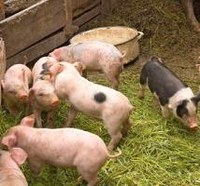(GENEVA) – Russia’s 2014 import ban on live pigs, pork and other pig products from the European Union violates international trade rules, the World Trade organization’s Appellate Body confirmed on Friday.
Following the ruling, which concerns Russia’s ban because of the outbreak of African Swine Fever in areas in the EU close to the Belarus border, the EU has called on Russia to withdraw its “politically-motivated” and unjustified measures and to allow EU companies to resume normal business with their Russian partners.
Protectionist policies by Russia affect a wide variety of other economic sectors. In the recent past, the WTO panel rulings sided with the EU contesting a number of trade barriers imposed by Russia: excess duties on paper and other products and anti-dumping duties on light commercial vehicles. The EU has also initiated a WTO procedure on Russia’s recycling fees on cars; this procedure is still pending.
The Russian appeal was against a WTO ruling in August 2016 when a WTO panel acknowledged that the Russian measures were not based on the relevant international standards and violate WTO rules. The new ruling confirms this finding.
The EU Commission says it sends another strong signal to Russia and all WTO Members on their obligation to respect international standards and, in particular, the principle of regionalisation, which would allow trade from individual areas of a country which are recognised as pest or disease-free, independent of the health status in the rest of the country.
The EU executive claims the EU has one of the world’s most efficient animal health and food safety systems, including high detection levels and stringent risk management rules. It says EU products from disease-free areas are safe, and there is no need for any country to maintain unjustified import restrictions.
Total trade between the EU and Russia fell by around 36 per cent in the period 2013-2015. Nevertheless, the EU remains by far Russia’s most important trading partner: in 2015, the EU exported to Russia goods worth 74 billion and imported products worth nearly 139 billion. While Russian exports to the EU consist mainly of energy and raw materials, EU exports to Russia are mostly vehicles, medicines, machinery and transport equipment, as well as agricultural products. The EU represents about 40% of total Russian exports (2015). Russia accounts for less than 6% of EU’s global trade and less than 4% of EU exports.



